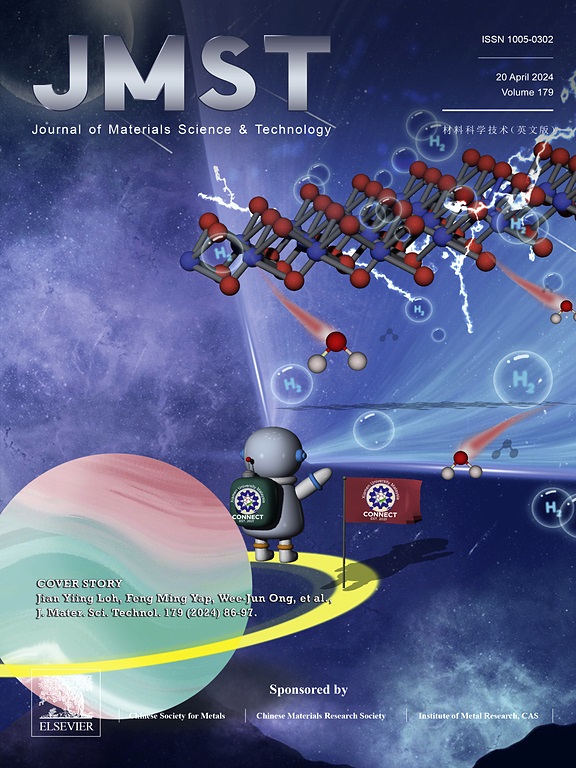Uncovering the hardening mechanism of multi-component carbide ceramics based on the coupling effect of covalent bond enhancement and lattice distortion
IF 11.2
1区 材料科学
Q1 MATERIALS SCIENCE, MULTIDISCIPLINARY
引用次数: 0
Abstract
The hardening mechanism of multi-component carbide ceramic has been investigated in detail through a combination of experiments, first-principles calculations, and ab initio molecular dynamics (AIMD). Eight dense carbide ceramics were prepared by spark plasma sintering. Compulsorily, all the multi-component carbide samples have similar carbon content, grain size, and uniform compositional distribution by optimizing the sintering process and adjusting the initial raw materials. Hence the interference of other factors on the hardness of multi-component carbide ceramics is minimized. The effects of changes in the elemental species on the lattice distortion, bond strength, bonding properties, and electronic structure of multi-component carbide ceramics were thoroughly analyzed. These results show that the hardening of multi-component carbide ceramic can be attributed to the coupling of solid solution strengthening caused by lattice distortion and covalent bond strengthening. Besides, the “host lattice” of multi-component carbide ceramics is defined based on the concept of supporting lattice. The present work is of great significance for a deeper understanding of the hardening mechanism of multi-component carbide ceramics and the design of superhard multi-component carbides.

求助全文
约1分钟内获得全文
求助全文
来源期刊

Journal of Materials Science & Technology
工程技术-材料科学:综合
CiteScore
20.00
自引率
11.00%
发文量
995
审稿时长
13 days
期刊介绍:
Journal of Materials Science & Technology strives to promote global collaboration in the field of materials science and technology. It primarily publishes original research papers, invited review articles, letters, research notes, and summaries of scientific achievements. The journal covers a wide range of materials science and technology topics, including metallic materials, inorganic nonmetallic materials, and composite materials.
 求助内容:
求助内容: 应助结果提醒方式:
应助结果提醒方式:


